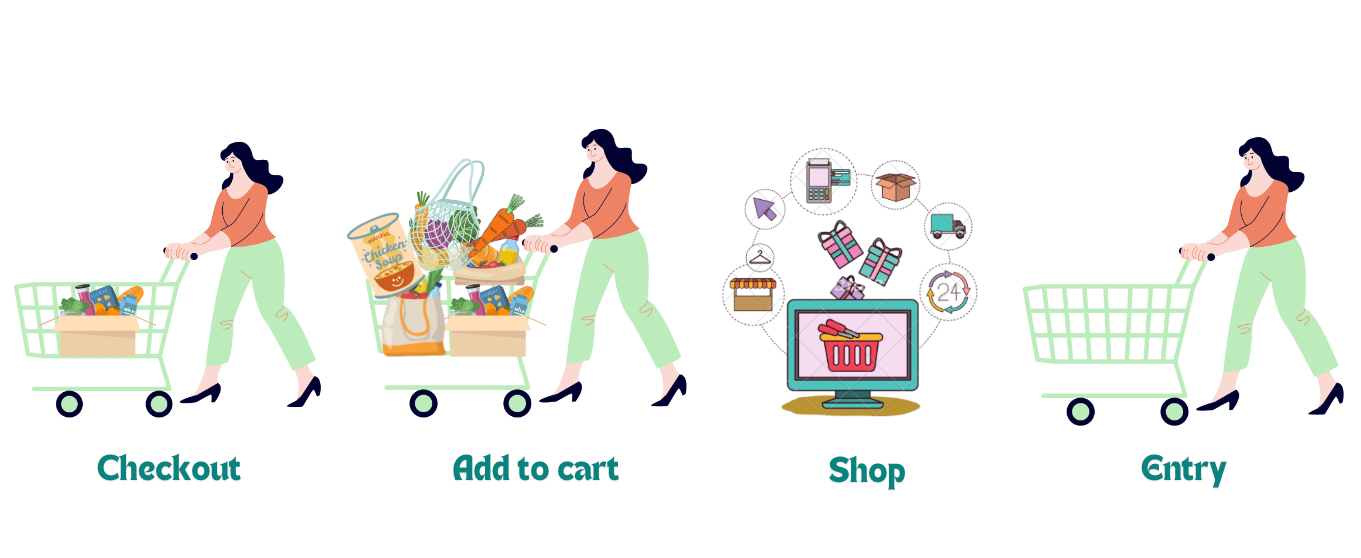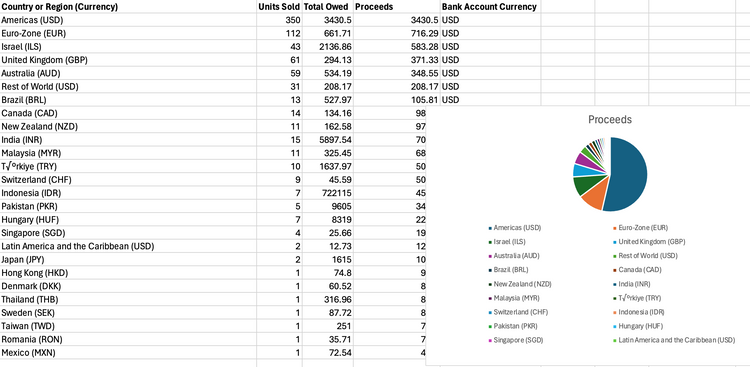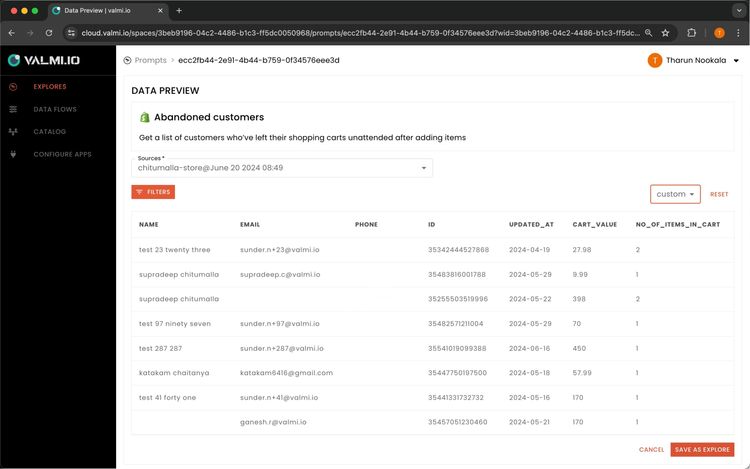Abandoned Carts: The unspoken reality of the e-commerce industry

Did you know what are some of the biggest concerns plaguing the e-commerce industry currently? While there are a host of factors, one of the most important and impactful is the Cart Abandonment by the users. Sounds surprising? It may sound a little absurd, but it’s one of the industry's top factors.
According to Baymard Institute’s survey, the average cart abandonment is ~ 70% i.e. out of 100 users, only 30 people complete their cart checkout process while the remaining 70 leave the items/carts unattended after adding the items. This is an alarming statistic and one that needs prompt attention.
Ever noticed why we sometimes leave items unattended after adding them to our e-commerce cart(s)? Do you have the habit of leaving items added to your shopping carts and forgetting them?
The answer may be Yes for most of us; congratulations, we’re in an exclusive club of people who forget/abdicate their carts after adding items. There are a multitude of reasons why people leave their carts unattended. This is also the channel that’s the most hurting for almost all e-commerce companies.
Most common reasons for Shopping Cart abandonment:

- Long and confusing checkout process: At times, for a few websites/apps, the checkout process seems cumbersome and endless, often boring the customers. This kind of weans away the customer's interest in buying a product and instead, they’d choose to halt the checkout process and see if they can buy the same product in another website/app.
Hence, it is important to have a simple checkout process (from both the UI and UX perspective), one that’ll sustain the user's interest and make them complete the checkout process. A good UI will often give a good UX to the user. Companies should invest their time in designing a good and easy checkout flow for their e-commerce applications else with the flurry of apps and websites currently in the market, you are sure to lose this customer (and a few more too). - Lack of desirable payment options: Oftentimes, you’d have noticed how some e-commerce mobile applications and websites don’t support the payment option that you are accustomed to which leads to customer discomfort. Ideally, any application should support all the popular payment options with the right payment gateway(s). This is also dependent on the geographies as well.
For example, in a nation like India where the UPI is now commonplace, it’s a no-brainer that the UPI payment process should be integrated into the payment flow. Likewise, when a company enters the Chinese market, it should support popular payment modes like Ali Pay, WeChat Pay, Union Pay, JD Pay, etc. Similarly for the other geographies too.
In some cases, the credit card information entered by the users is declined by the website/app and this forces the users to exit the checkout process after adding the items to the cart(s). - Mandatory account creation: Some applications only support payments and checkout processes for registered account users while some others have guest checkout processes too. Those applications that mandatorily require user account creation stand to lose some users who may not want to create an account mandatorily. Instead, the user may want to experience the checkout process first and then may want to decide on creating an account or vice versa.
- Longer delivery time than expected: For some websites and applications, the estimated delivery times are not very clear and for some, the delivery times are shown on the checkout page only. Users, while they are initially browsing through the catalog, may not really know the delivery times but these may get clearer as they land on the cart/checkout page. When the delivery time in the cart is more than what was promised in the catalog or what was anticipated by the user, the user will most likely not complete the checkout process; rendering the cart to be abandoned.
- High Shipping Costs: As the statement suggests, for some e-commerce applications, users notice that the cost of shipping is prohibitively high and this proves as a barrier for them to place an order. In some sites and apps, additional taxes and fees also put off customers from placing orders. At times, the shipping cost appearing on the checkout page is just too different from the initially shown one. Any website/app has to maintain homogeneity across the overall user experience and any anomaly may result in the user not completing their order. High shipping costs, taxes, and fees were collectively the single largest reason quoted by the 1012 respondents in the Baymard Institute’s survey.
- Inability to see the total order cost upfront: This is a small yet significant reason why users leave their checkout processes midway. 21% of the respondents in the Baymard Institute’s survey believed this to be the reason for abandoning their carts. Ideally, the user should be able to view the total order cost from the beginning of the checkout process or in the cart as the item(s) are added. This will show the user the total costs enabling them to make an informed decision.
- No discounts or promo codes: As the name suggests, most users (in fact, all of them) want some discount code or promotional code/offer for placing their order, and at times, the application cannot offer any such thing and in these times, users tend to not go through with their orders and the items are left waiting in the cart.
- Ambiguous return and refund policy: The best ecommerce sites have the best return and refund policy; for they have the user experience at the heart of their operations. Such companies also strive to offer the best services to their customers. Their return and refund policies also are robust. There are some other sites whose return and refund policies aren’t clear and this will lead to the customers eventually not placing an order, fearing the red tape that might be involved if there’s a return (and hence a refund).
- Payment security concerns: This is particularly true of new websites. Some websites seem flaky, especially on the payment side; the payment options used and everything around the payment seem riskier. In such cases, it’s important to assure the users of the encryptions being used, the secure socket layer (SSL) implementation, PCI (Payment Card Compliance), etc. Deploying/Showing such security measures will allay the fears that the customers may have during the checkout process.
- Restrictions on the Product Quantity: In certain scenarios, the users are blocked from adding more quantity of the same item. This may be to prevent the customer from hoarding but it could also be a hindrance for the customer from placing the order and he/she wouldn’t want to come back again and place an order for the same item. They’d want to place the order (in the required quantity) all at once and not come back and order again. This doesn’t bode well for a good customer experience.
- Site speed and app performance issues: This is a valid concern and one that has to be addressed on priority. The website speeds and/or the app’s performance must be as robust and seamless as possible. If there’s any glitch or a lag in the checkout process, the user is likely to move away from completing the checkout process. A few websites/apps have issues in the user journeys while others crash randomly, each of these rendering the carts abandoned.
- Comparison Shopping: This is a very normal thing as users would want to compare the prices of the same item across different apps and websites and they’ll most likely buy at a place that’s offering them the lowest price. Hence, even after adding items to the cart, users tend to go and check for the same item on other websites in search of some good offers/cheap prices, etc.
Conclusion:
If you look closely at all the above criteria, a majority of them are around transparency and clean UI/UX flows. If the apps and websites are designed keeping the end customers as their focus, most of these issues can be solved. Addressing all the above concerns is very important for any e-commerce business so that the problems around Abandoned carts are reduced/eliminated as much as possible.
Valmi.io and Abandoned Carts:
Wonder what’s the relationship between the two? We at Valmi.io are building an eCommerce data platform centered around the Google spreadsheets for all the analysis that the users might need through our Prompts and Explore features, including consolidating and communicating with the users of these Abandoned Carts.
Look out for our updates in the forthcoming weeks to come as we bring out the product.





